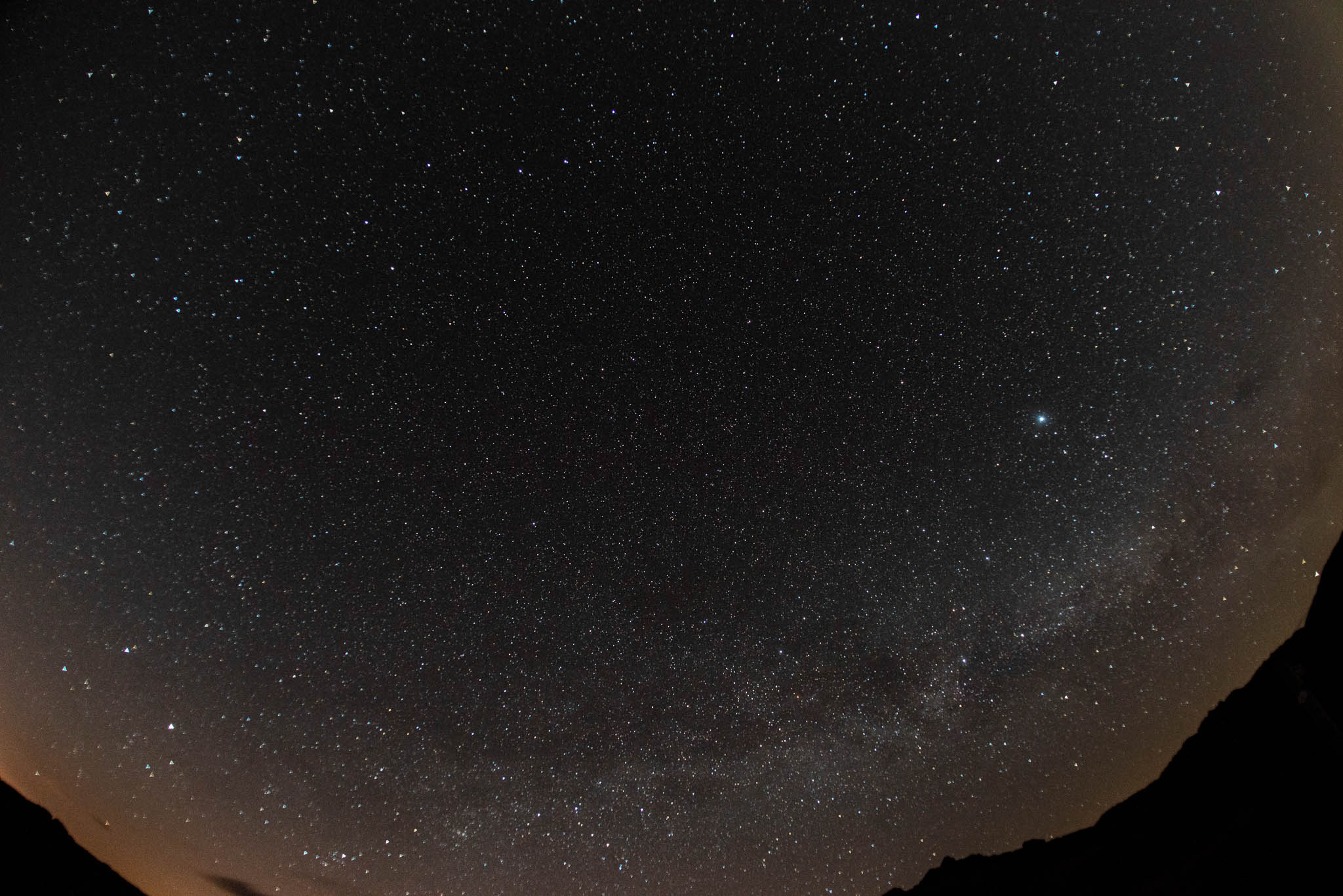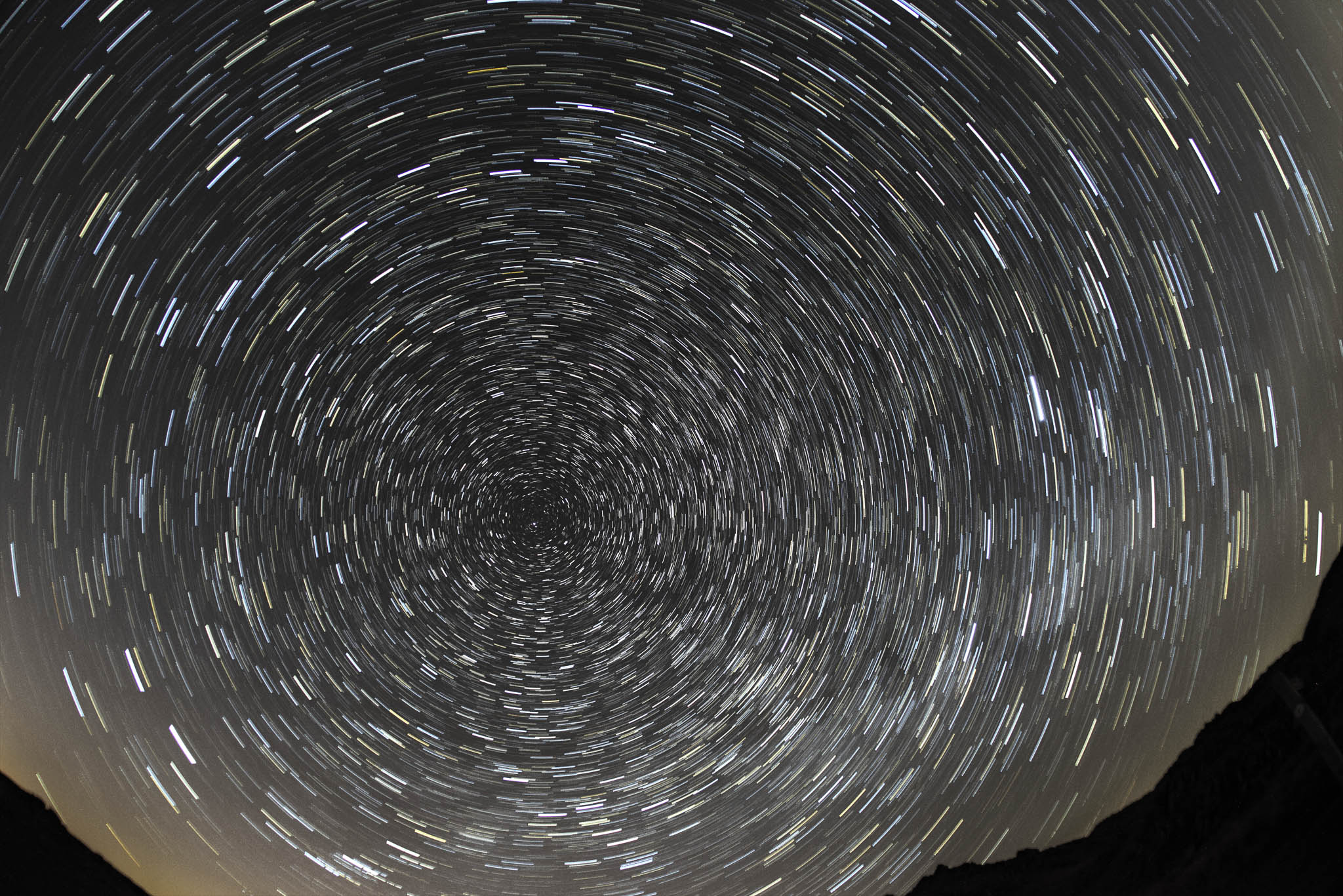| Joined: | Sun Apr 1st, 2012 |
| Location: | South Lakeland, UK |
| Posts: | 4066 |
| Status: |
Offline
|
Nothing spectacular, I had hoped to try the 300mm but until I get a real handle on the Polar alignment there is no point.
I took these pics with the 16mm f/2.8 fisheye. The mount is rock solid, well on top of it's job, the adjustments are nice, the right angle finder is good enough. I have established that Polaris is closer to the celestial North than it was in 1985 by about 50%. I now think I know how to set the Right Ascension (RA) to the celestial 'clock' by aligning Ursa Major with the etched markings in the Polar scope. Now that I know Polaris is only about 2 degrees from celestial North, that makes the RA adjustment less critical in a sense, although for long exposures with a long lens it does matter, especially if the subject is well away from the pole.
The Milky Way is close to the horizon.
All images taken with Nikon D800 and Nikkor 16mm f/2.8 fisheye @ ISO1600, 30 seconds at f/4.0, taken at 35 second intervals.

This is 20 exposures taken with the polar mount running, stacked in StarstaX. Almost no trailing, the motor is doing the business but it's only a 16mm lens.

And 100% crop...

The next is with the Polar mount turned off. 37 exposures. And a meteor!

And 100% crop... Also showing the crop area.

With the 100% crop, you can clearly see that Polaris is nowhere near the celestial pole at that magnification with the D800 resolution.
It's coming together.
____________________
Robert.